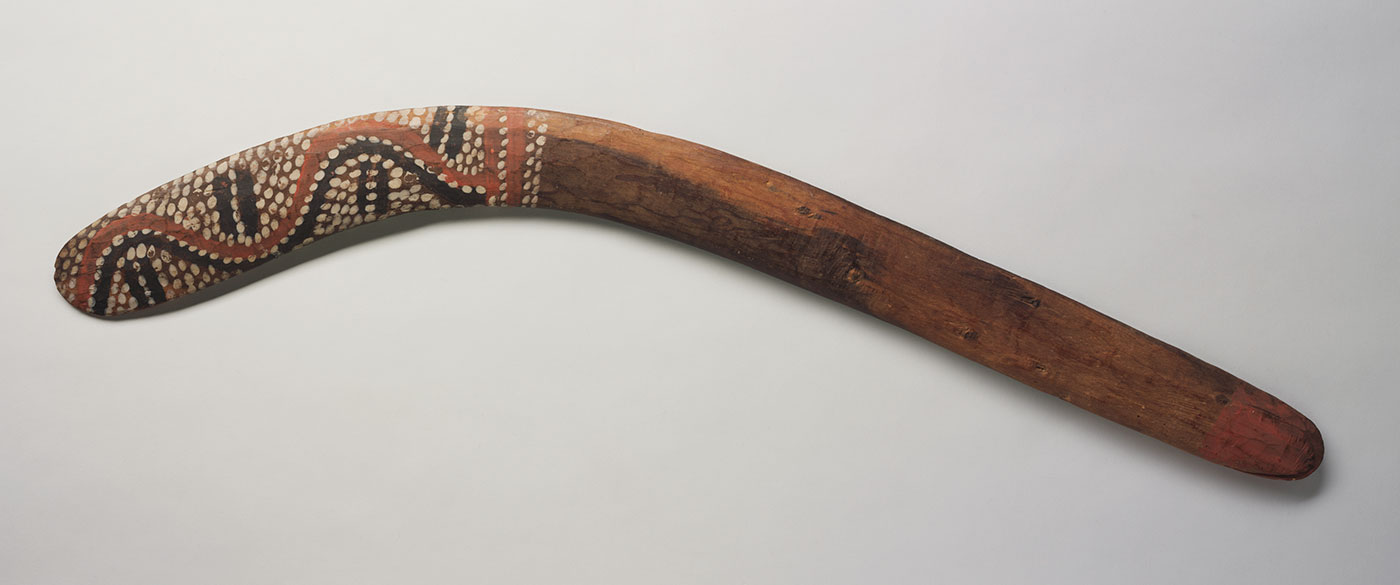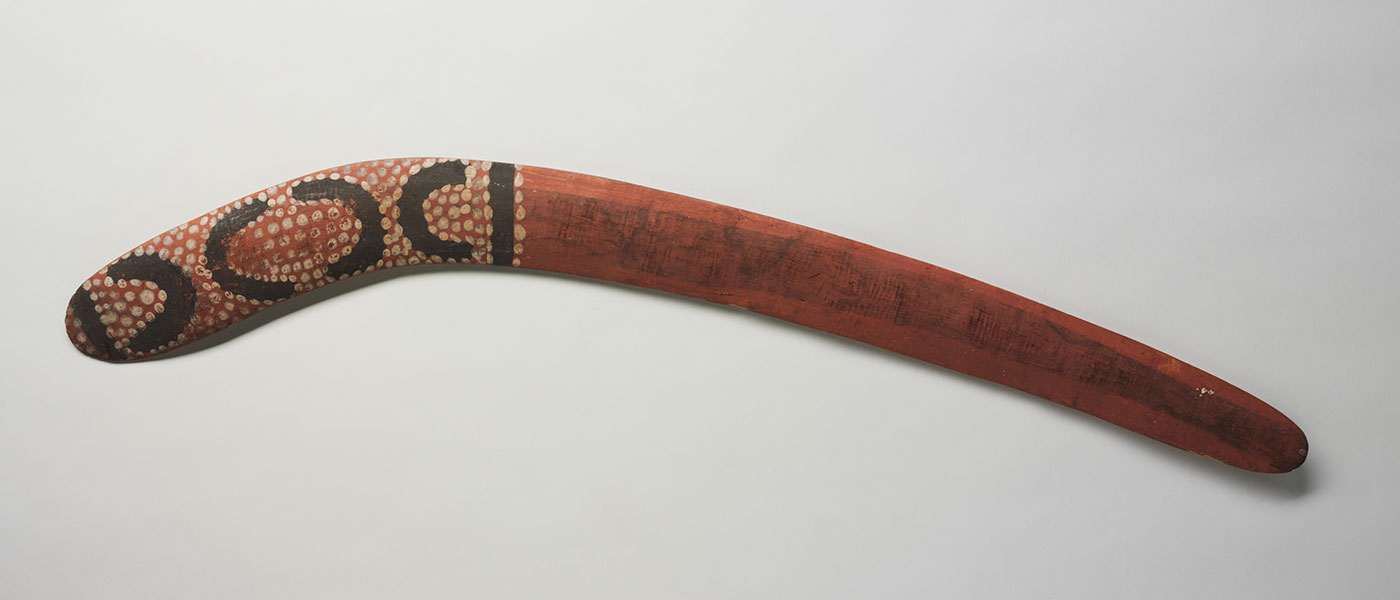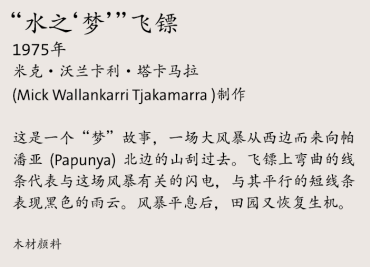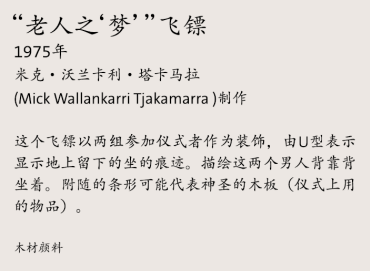Ngaliya language group
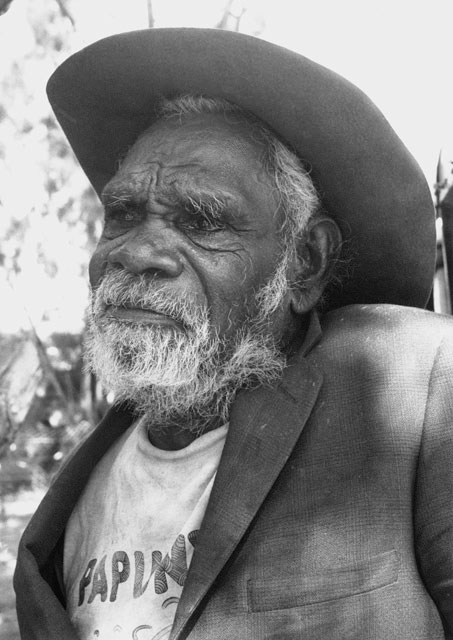
about 1914–1996
Born west of Karinyarra (Central Mount Wedge), an area for which he was later ‘boss’ (senior custodian), Tjakamarra worked as a stockman at Glen Helen and Narwietooma stations in his younger days.
He and his countryman Bert Tjakamarra were the traditional owners of the Papunya Honey Ant Dreaming site and authorised the use of its designs in the Papunya School mural, which set the painting movement in motion in 1971.
Mick’s great love of painting and his deep knowledge of Aboriginal law had a profound influence on Papunya painting for more than two decades.
Artworks
Water Dreaming boomerang, 1975
In this Dreaming story, a great storm came from the west to a mountain north of Papunya. The sinuous lines on the boomerang represent the lightning associated with the storm, while the short parallel lines indicate the black rain clouds. As the storm waters disappeared, the countryside came to life again. |
|
Old Man’s Dreaming boomerang, 1975
This boomerang is decorated with two sets of ceremonial participants, represented by the U shapes — the mark left on the ground by a seated human figure. The two men are shown seated back-to-back. The accompanying bar shapes may represent sacred boards (ceremonial objects). |
|
